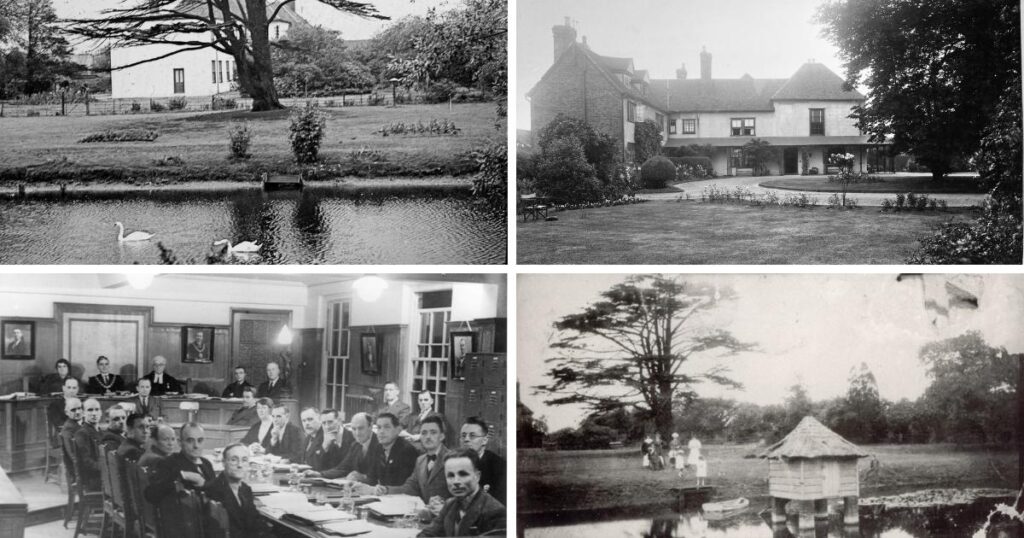Last month, a planning application was approved for the “repair and restoration” of the moat around Valence House Museum in Becontree Avenue.
With works projected to start in autumn, we are looking back at the extensive history of the house and its grounds.
The earliest mention of a house on the site was in the 1250s when Gilbert Hakun of Barking granted land to Sir Hugh de Dyve, a knight in the service of Henry III.
Valence House from the east around 1930 (Image: Valence House Museum) In 1298 Agnes de Valence was leased the house and it is after her whom the estate is later named.
She was a niece of Henry III and her second husband Hugh Balliol was in line to the Scottish throne. Had he survived, Agnes may have become Queen of Scotland.
Around 1300, the moat was dug around the property – possibly due to Agnes de Valence wanting to show her social status.
Originally surrounding the house on all four sides, the moat would have enabled fish, ducks and geese to be bred and kept for food.

In 1451, the estate became the property of St Anthony’s Hospital and provided funds through rent income.
A series of leases were issued including a rent of a single red rose for Peter Courtney in 1475 and an annual payment of £9 for Timothy Lucy in 1584.
Leslie Westwood, museum and collections curator at Valence House Museum, said: “Valence House and its moated enclosure provides a window into the history of an area which is now completely unrecognisable from the rural and agricultural landscape it was, and largely remained, until construction of the Becontree Estate from 1921.

“The moat and landscape within the moated enclosure is inextricably linked to the historic house, illustrative of a once common type of moated medieval manor house but which is now a rare and precious survival, not only in the borough but also in the country.”
In 1802, Valence House was sold at auction to John Hopkins Dare and in 1920 London County Council (LCC) bought the land with the intention of building the Becontree Estate.
This saw the May family leave the property as the last leaseholders of Valence House to this day.

In 1926 Dagenham Urban District Council (DUDC) bought the house to use as the town hall for the growing Becontree Estate and a year later Valence Park was created.
In 1929 permission was granted for the erection of a new two-storey extension on the eastern end of Valence House which was used as the new DUDC chamber.
The DUDC public library committee agreed to establish a museum and art gallery at Valence House in 1936 and two years later this became the headquarters for Dagenham Library Service.
In recognition of its rare survival, Valence House was listed Grade II in 1954 and in 2010 it was reopened to the public following a two-year, multi-million pound redevelopment project.




